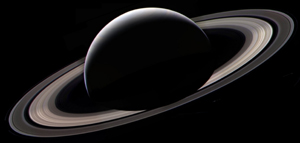After a very capricious spring in terms of weather, we were yearning for summer like few others this year. At this time of the year, we all look forward to more serene not just days, and especially night sky lovers also hope for cloudless nights. It seems that we most often associate summer with not only the warmest, but also the longest days of the year. Nothing could be further from the truth, for with the beginning of the astronomical summer, which this year began in our hemisphere on June 21, the period of lengthening days and shortening nights ends, and the reverse process begins, slow at first, accelerating over time.
Here it is also time to recall that every year in the first days of July, moving in an ellipse-shaped orbit, the Earth passes through the most distant sunspot from our Daily Star, or aphelion. It moves slowest in this region of its orbit, making summer the longest season in our country, about 4.5 days longer than the shortest – winter. This is a plus, of course, but being 5 million kilometers farther away than during the perihelion (solar point), which falls in winter in the first days of January, the Earth is slightly less heated – but this is probably also a plus, since in the northern hemisphere of our planet it mitigates both summer heat and winter cold to some extent.
For professional astronomers as well as amateurs, however, more important is both what awaits us in the night sky this summer. In addition, observations of many phenomena are limited, especially in the first month of summer, by the still rather short and, on top of that, not entirely dark nights. Until mid-July in the south of Poland, and until the first days of August in the northern extremities, even at midnight the Sun does not penetrate 18° below the horizon, enough so that the last scattered rays of its rays in the Earth’s atmosphere do not noticeably brighten the sky, making it difficult to see the fainter planets and stars, especially nebular objects.
Among the cyclically recurring phenomena, the Moon’s conjunction with the planets is often noteworthy. Because of the distinctive distribution of the planets in the sky, for many months now these encounters have occurred in series over several days. After the June series, which ends on the second day of summer with the Moon’s encounters with Venus and Mars, the next series of conjunctions with each of the 7 planets visible in the sky lasts 2 weeks, from July 7 to 21, the next 16 days, from August 3 to 19, and the last summer series 15 days, from September 1 to 16. Among these total of 23 summer conjunctions of the Moon with the planets, most occur during the day or below the horizon, and only three under conditions that are accessible to observation, though not easy. Less than an hour after midnight on August 4-5, with its disk 85% illuminated, above the southwestern horizon the Moon approaches Neptune from midnight at 2.6°. Of course, Neptune, invisible without the use of at least good binoculars, near such a bright Moon, will not be easy to spot. Much more convenient will be the conditions for observing exactly 4 days later, the conjunction of the already only 44-percent Moon with 6 times brighter Uranus. During the next conjunction, on August 30, 1.5 h before midnight, our natural satellite will meet with a rather bright, but not easy to see Saturn (photo: NASA), as on that night the Moon will shine with its entire disk during the so-called “Moon of the Moon”. super-full, coinciding with the full moon, the second closest perigee this year (after January). It’s a pity that unavailable for observation with us will be on September 16, 2 h before midnight, a very close conjunction of the Moon with Mars, resulting in up to several minutes of covering of the Red Planet.
We are also not lucky this summer with mutual planetary conjunctions. The only one will be on July 27 at the end of the day, the conjunction of fairly bright Mercury with almost 60 times brighter Venus. Unlike the Moon, the mutual position of the planets moving in the sky, after several hours, does not change noticeably. This time, however, Mercury sets with the end of twilight, but Venus only a few minutes after sunset, and despite its greatest brightness among the planets, it is unlikely to be spotted at the edge of the horizon, 5° below Mercury.
As for observational opportunities for the planets, starting with Mercury, as the closest planet to the Sun, this summer it reaches maximum evening visibility in mid-July, thanks to its then quite high brightness visible up to nearly 1 h after sunset, while twice as long, equally bright, it can be observed in the morning sky at the turn of summer and autumn. Venus, virtually visible for almost the entire summer, at first up to about 2 h in the evening, disappears from the evening sky in late July and early August to shine in the morning sky just 3 weeks later, by the end of the summer already visible for more than 3 h. Mars, throughout the summer visible in the first half of the night, but at first setting about 2 h after twilight, at the end already with the end of civil twilight. For at least half of the night we can admire Jupiter rising earlier and earlier, and thanks to opposition on August 27, Saturn nearing the maximum of its brightness is discernible for almost the entire night in late August and early September.
Of the other phenomena, let’s not forget the meteor maximum, which falls annually around August 13, of perhaps the most famous swarm – the Perseids.
For those more closely interested in this topic, I invite you to visit Mr. John’s Starlight, a weekly astronomy service available around the clock at: www.radio.katowice.pl/gwiazdziarnia.
Jan Desselberger





